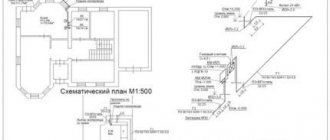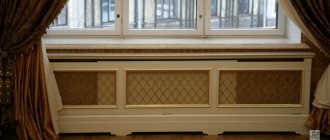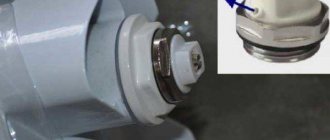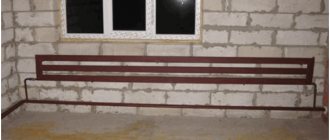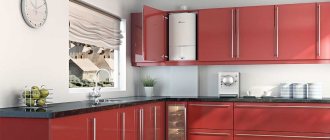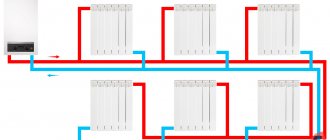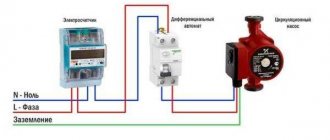/Accessories and decor/Decoration/
When an unsightly heating radiator spoils the interior, there are several ways to solve the problem: replace it with a designer or in-floor model, or simply cover it with a screen/box. The latter method provides several advantages:
- A screen or box not only hides a bulky structure, but often decorates the room.
- The screen/box can be used to build an additional console, a shelf for decoration, a bench, a rack, or a desktop.
- A closed battery is safer for children - there is no risk of burns or accidental impacts. However, one can argue with this argument, because it is in the children's room that heat loss is least needed.
In a children's room, the radiator should be covered with a nice grille with a large number of holes, for example, carved like in this photo
- If the house is too hot and dry, then closing the radiator will help create a comfortable microclimate for household members, their pets and plants.
- The screen prevents dust from settling in the inside of the radiator and thus simplifies cleaning.
There are also disadvantages:
- The heat transfer of a closed battery decreases on average by 10-15% or more (depending on the degree of closure);
- Screens and boxes often make it difficult to service radiators, and sometimes even block access to them.
- Often, improperly closed batteries lead to fogging of windows, and then to the appearance of harmful mold on slopes and walls.
- The screen or box, at least a little, “eats up” the space around the radiator. After all, any elements should be installed at a distance of 5-10 cm from the battery.
- Battery fencing requires additional expense and hassle.
Later in the article we will tell you how to close radiators without compromising the heat in the house and show with an example of 70 photos how to do this beautifully.
What to consider when masking a battery
Before you start masking, you need to know a few important nuances:
- The first thing you need to understand is that with any method there will be heat loss.
- Convection air flows should not be blocked by anything; this is the only way to maintain uniform heating of the room, and the windows will not fog up.
- For various emergencies, it is worth considering in advance free access to threaded connections and the radiator - this could be a window or a removable structure, for example, a door with hinges.
- For repairs, the faucet, thermal head and other elements of the heating system must remain in good accessibility.
Effect on thermal output
Ideally, the screen should not affect the heat exchange between the battery and air. However, any design impedes air circulation and partially blocks the paths of thermal radiation.
Changes in the thermal power of the radiator depending on the placement and presence of a screen.
It is important to meet the following conditions:
- leave a ventilation gap of at least 60 mm from the floor across the entire width of the radiator;
- provide a hole at the top for the exit of heated air;
- maintain a distance from the sections to the front wall of the screen of at least 50 mm;
- choose a screen with a front wall, at least 50% of the area of which is filled with through holes;
- give preference to easily removable screens that can be easily dismantled on particularly cold days to improve heat transfer and also for cleaning.
It is advisable to paint the inner surface of metal screens black - this will contribute to its rapid heating and increased heat transfer by emitting infrared waves.
The best ways to beautifully hide radiators
There are several ways to hide batteries; in this section we will look at the most popular and effective ones.
Hinged screen
It is by far the most practical and popular method; most often this design is made of metal and has its advantages:
- simple installation;
- heat exchange remains the same;
- can be made with rounded corners, which reduces the risk of injury.
Glass screens
A screen made of glass will be an interesting and stylish solution, especially for those who choose minimalism or a modern style in interior design. Photo printing or various patterns can be applied to the glass, but this method is not a budget option. Installation is carried out on a screw holder, but you will have to drill holes in the wall. However, the heating radiator will be stylishly protected. This option will fit into any interior.
Box screens
Box screens are an excellent option for decorating radiators.
- They will help to completely hide the battery.
- The box can become a piece of furniture.
- Erans are easy to install and easy to care for.
- Protect from burns or other injuries.
The photo shows an original green wooden box in the children's interior.
Curtains to the floor
Let’s not forget about the most popular way to hide batteries - simply hang them with opaque or translucent curtains. Using this method, over time you will even forget that there are pipes and a radiator behind the curtains. The main thing is to choose curtains that will look harmonious and not show everyone that there is something behind them.
Painting the walls in color
How to hide a heating radiator on the wall if other designs are “prohibited”. There is only one way to paint it the same color as the wall.
Wood frame
Wood will create coziness and warmth in the apartment, and the disguise of the battery will be elegant and beautiful. This option is for those who are furnishing their home in eco-style using natural materials. These ways to hide batteries can be used as a stand for home decor.
In the photo, ordinary wooden blocks stylishly hide the radiator in the kitchen.
Built in furniture
Another common way to cover a radiator is custom-made furniture or built-in furniture (shelves, cabinets, folding tables, seating).
Hide the radiator with furniture
Arrange furniture, such as an armchair or desk, so that it covers the radiator. A cast iron radiator is not attractive to many, but pieces of furniture can hide it.
Replace with designer model
For those who don’t want to invent anything, unique designer ways to hide batteries have been developed that already initially have a beautiful appearance and you simply don’t want to hide them.
Original ideas
There are many creative ideas that can turn batteries into a decorative element:
- Forged products
- Hide the radiator with fabric
- Painting and decoupage of batteries
In the photo, with the help of a beautiful painting, the battery has merged with the wall.
Efficiently working decorative screen
In order to select or make a screen that will minimally reduce infrared radiation and will not slow down (and sometimes even improve or activate) the circulation of heated air, it is necessary to take into account some nuances:
Unsuccessful option for closing heat exchange devices of the heating system
- Although the design shown in the first illustration looks aesthetically pleasing and is generally functional, it will not allow heated air to flow freely into the room. The wooden grille almost completely blocks access to the heat emanating from the radiators. The upper part of the radiator is also closed, and if it does not have special aerodynamic guides, then the convection of warm air will be extremely difficult.
The other extreme is that there are gaps for IR radiation, but the channels for free convection are almost completely blocked
- This version of the design covering the radiator is more acceptable, since there are sufficiently large gaps between the cladding strips - this will allow direct thermal radiation to freely enter the room. However, it is unsuccessful in that the top and bottom of the grille are closed, which will impede the circulation of air masses. A wide window sill may be convenient for use as a shelf, but it eliminates the creation of a warm air curtain that should block the cold air flows from the window.
An easy-to-use battery screen option that is optimal for passing convection currents. True, the density of capture is still high, and the barrier to thermal radiation is quite significant.
- This grille-screen model can be called a very good option, since the facade panel has many gaps through which the heat emanating from the surfaces of the radiator sections can pass (it would not be advisable to have a more sparse weave). The horizontal upper part of the structure is a frame that will not become an obstacle to circulating air flows. There are no barriers at all to the entry of cooled air from below. In addition, the bottom of the facade panel can be raised when cleaning.
A good option for a camouflage screen.
- Another model of a decorative screen that is suitable for masking any battery. The product is made in the form of an openwork mesh, so it looks light, almost weightless, but at the same time, the panel reliably hides the radiator located behind it. Thanks to the mesh structure of the façade and top panels, the heated air will not encounter obstacles to both direct heat input and the circulation process.
An effective device that can be used to complement the screen design is an aerodynamic visor. This element, installed under the window sill at an angle, will direct the rising hot air towards the room, preventing it from accumulating under the plane of the window sill. Such a visor should run along the entire length of the radiator.
But that's not all. It is recommended to supplement the design with another device - a heat injector. These are two more guide plates curved towards the room along the entire length of the radiator, installed on top along the boundaries of the space between the battery and the decorative screen. This does not interfere with the operation of normal convection flow when the coolant temperatures in the heating system are low. But when the heat is high, it collects all the heat that accumulates between the radiator and the screen, and redirects it into the room with a powerful air flow, creating a kind of thermal curtain. The efficiency of the heat exchange device increases significantly, and thereby largely compensates for the losses arising due to existing obstacles to direct thermal radiation.
The diagram below shows a screen, complemented by an aerodynamic visor, mounted on a radiator, as well as the heated air flows emanating from it:
A diagram of the clever screen design with aerodynamic improvements.
- A - heat-reflecting screen made of foil-coated heat-insulating material, mounted on the wall.
- B - aerodynamic curved canopy, installed under the window sill from its edge to the wall at an angle.
- B - two heat injector blades, fixed in the upper part inside the decorative screen, creating a tapering nozzle in the space between the radiator and the outer casing (screen).
- G - elements of the lattice façade part of the decorative screen.
Thermal direct radiation is shown in the diagram with red dotted lines (item 3), ending with arrows. It is clearly visible that those of them that were initially directed towards the wall are reflected from the foil screen and redirected towards the room. They also heat the decorative panel, which, in turn, also becomes a source of thermal radiation.
Blue arrows show the direction of cooled air (item 1) entering the radiator from below, which then heats up and rises upward, again heading into the room (brown arrows, item 2), which is facilitated by the aerodynamic visor and heat injector.
Hide with drywall
Separately, I would like to talk about how you can hide batteries using drywall. It’s worth noting right away that the material has its drawbacks, but plasterboard construction is still very popular for repairs.
- The material is environmentally friendly and is not subject to combustion.
- You can find several varieties of this material on the market.
- This camouflage option is budget-friendly, and installation can be carried out in different ways, in a way that is convenient for you.
- Also, it is drywall that will allow the apartment owner to come up with any design, which will help not only to cover the pipes and radiator, but also to make additional decorative elements.
The downside is that drywall is afraid of external influences; if you do it carelessly, it is quite easy to break or pierce it. And if a breakdown or leak occurs, the entire finish will have to be replaced again, but this material is cheap.
Calculation of radiators for a room, taking into account the features of their connection and location
We must assume that since a site visitor is reading this article, he will be interested in calculating the required power of the heating radiator (number of sections - for collapsible models). Moreover, the final value also depends on the presence and type of decorative screen.
The required power of a heat exchange device installed in a room depends not only on the area of the room, but also on a number of other criteria. All this is taken into account in the calculator presented to the reader.
Below are some explanations on how to carry out the calculation.
Calculator for calculating the required power of a heating radiator
Go to calculations
Do-it-yourself installation of a plasterboard box
In order to close the battery, you need to measure it, and then buy metal profiles and other additional products.
- What materials are needed: 12 mm plasterboard sheet, metal profiles 27x28 and 60x27, self-tapping screws for plasterboard and metal, dowel-nails 6x40 in size, construction sickle, perforated corners.
- Tools: screwdriver, hammer drill, metal scissors, stationery knife, stapler, pencil, tape measure, building level.
Attention, for the construction of a plasterboard box there is an important requirement: the window sill must extend beyond the radiator by at least 3 centimeters.
Work order:
- Installation of the frame. The profile should be mounted on three adjacent sides: floor, wall, window sill. Press the 27x28 metal profile to the base with your hand, drill a hole using a hammer drill in both the profile and the wall. Using a screwdriver, screw the dowel-nail into the hole. At the bottom of the window sill, a 27x28 metal profile is mounted on self-tapping screws; the length of the screws should not be greater than the thickness of the window sill. Next, you can install jumpers made of metal profile 60x27.
- Selecting the grid size. This hole must be made slightly smaller than the grid size. You can focus on three recommended sizes: 60x120, 60x90 or 60x60.
- Installation of drywall. Plasterboard sheets can be cut with a utility knife. Screw it in with a screwdriver.
- Installation of corners. They must be secured at the corners with a construction stapler, or attached to gypsum plaster. Serpyanka should be applied to all seams of the plasterboard box and covered with plaster. Before painting or wallpapering, the plasterboard box must be puttied, sanded and coated with primer.
Replace the window sill with a work area with a sink
Instead of a window sill, you can install a sink or equip a work surface.
Unusual design of the sink, which is installed instead of a window sill.
A lot can fit on these shelves.
Instead of a window sill, you can even install a hob and work area.
If you can move the communications, then instead of the window sill, install a countertop with a sink. Such a solution will be rational and convenient; not only will more space immediately appear, but the work area itself under the window will be well lit, and the interior will be transformed - it will become more fashionable and stylish.
If you decide on this kind of redevelopment, you need to take into account some nuances. For example, the width of the slopes, so as not to place the sink too close to the window, in order to avoid increased humidity and the appearance of mold. In no case should such innovation interfere with the opening and closing of the window.
Masking heating pipes
It doesn’t matter whether it’s an apartment or a house, a bedroom or a kitchen, everywhere I would like to have a good renovation. Questions immediately arise: how to beautifully hide heating pipes and how can this be done with minimal cost and maximum efficiency? At the same time, the method of disguise should be truly invisible and unnoticeable, fitting into the room.
The pipe can be hidden inside the wall, or it can also be closed into the floor. Remember that the old heating system should not be hidden in this way; this option is possible after a complete update of all elements.
Box on frame
It is best made from wood, plastic or plasterboard. Do not place the heating pipes close together; there should be at least three centimeters between the box and the pipe.
Hide behind decor
Decoration of pipes in various ways, for example, wrapping them with jute rope. But remember that this reduces heat transfer. Many owners decorate pipes with flowers; this can be done using bamboo with leaves. Only imagination should work here; even an old pipe can look completely different.
Painting to match the color of the walls
The easiest and most practical method is to paint the radiators or riser in the same color as the walls, but the heat generation will not be reduced.
In the photo in the kitchen interior, the pipes are painted to match the blue walls.
Hide under the floor plinth
A good invention was the floor plinth, in which you can easily hide batteries located horizontally and low to the floor.
conclusions
Finishing the walls behind the radiators was much easier if it was done simultaneously with other repair work. But if this was not possible, then you can always correct the situation by using modern building materials and tools. You need to choose a finishing method based on the size of the space behind the radiator, heat loss from the wall itself, the result you want to achieve from the cladding and the cost of materials and your own skills. Then such repair work will be carried out with the least amount of money and time.
Photos in the interior of the rooms
Kitchen
The kitchen is the ideal room in which all ways to hide batteries will become practical and convenient. If the room is small, then you can hide the radiator with the help of a beautiful tabletop or make a folding table, which will fold out when convenient.
Factories of metal-plastic structures offer a large selection of beautiful large-sized window sills that imitate stone, wood and other materials. A modern window sill does not break under weight, is not afraid of external factors, is easy to care for, wipe clean, is not afraid of scratches, and so on. You can hide any type of battery in this way, including cast iron.
In the photo, wooden boxes are used to disguise the radiators.
Living room
If the radiator is in a niche, then a wide window sill will help create a work area.
You can place souvenirs, vases or potted flowers on the constructed wooden box. You can also cover unsightly radiators in the living room with thick curtains.
The photo shows a modern living room. In order to hide the radiators, a wooden structure was installed, which also serves as a place for rest, storage and decoration.
Bedroom and children's room
In the interior of a bedroom and children's room, batteries can be used as another place to relax, a tabletop for decorative elements or a workplace.
Bathroom
You can hide the pipes in the bathroom using a louvered door, plastic grilles or a cabinet with opening doors.
We hide heating radiators using wooden, glass or plastic screens.
In the photo, the radiators in the bathroom are hidden using a wooden box.
Hallway
For radiators in hallways, glass screens or wooden boxes are suitable. In a small room, covering the battery is only necessary from a practicality point of view. This could be a locker for storing shoes, or the battery will become a small coffee table where keys and other necessary items will be stored.
Closet
Yes, this is possible. Of course, this piece of furniture is made to order. The doors of the lower part of the cabinet are made perforated so that the facades do not interfere with circulation. Books, magazines, souvenirs, etc. are stored on the shelves above.
If the radiator is located in a corridor or hallway, the cabinet can be made solid, closed. But its doors should still be holey. The function of a cabinet can be utility (for storing, for example, towels, cleaning products, etc.) or clothing.
Examples in different interior styles
Modern style
For a modern style or a high-tech and minimalist style, any material made of wood, glass (glass panels) or metal is suitable.
Classic style
It is recommended to use natural materials; it is better to opt for a wooden lattice.
Provence
Wood also loves styles such as Provence, country, chalet and eco-style.
Scandinavian
Wooden grilles in light colors will look appropriate in the Scandinavian style.
Loft
In the loft style, old radiators and pipes are most often not covered; they are left on display or replaced with interesting design options.
Use the niche for storing vegetables and canning
To avoid loading the refrigerator with vegetables in the winter, you can use this niche as a cold pantry. If necessary, insulate the wall a little so that during severe frosts the vegetables do not freeze. Replace shelves and front doors with more modern and practical ones. You can even use glass ones, the only condition is that there must be order so as not to spoil the aesthetic appearance of the interior.
Connection diagrams
There are several radiator connection diagrams that comply with the requirements and standards of GOST and SNiP. They are represented by the following varieties:
- Lateral connection. Characterized by maximum heat transfer. With this connection, the input is made from the top of the battery, and the output is from the bottom on the same side. This is the most popular connection diagram.
- Diagonal connection. Produced with significant system dimensions. Water enters the radiator through the top and is discharged from the bottom on the opposite side.
- Lower connection or “Leningradka”. It is produced in small one- and two-story houses, as well as when installing pipes hidden under the floor. The efficiency of such a system is 5-15% lower than with a lateral connection.
When pipes are in a rough screed, heat loss increases due to contact with concrete and the ceiling covering of the lower floor.
Plastic gratings
Cheap, but at the same time definitely not for residential premises, they will hide the battery/pipe, but when heated they can release compounds dangerous to humans, especially if the panel (grid) is made of cheap plastic by a “gray” manufacturer.
Plastic grilles to hide the battery
Advice! Plastic screens are suitable for non-residential premises, taking into account their resistance to high humidity - for bathrooms.
Painting
The easiest way to hide the battery is to simply paint it to match the wall near which the radiator is mounted. You just need to purchase special paint for painting batteries. This is an option when radiators match the overall style of the room
Cast iron radiators look great in a Venetian style interior
Painting a stylish radiator red
